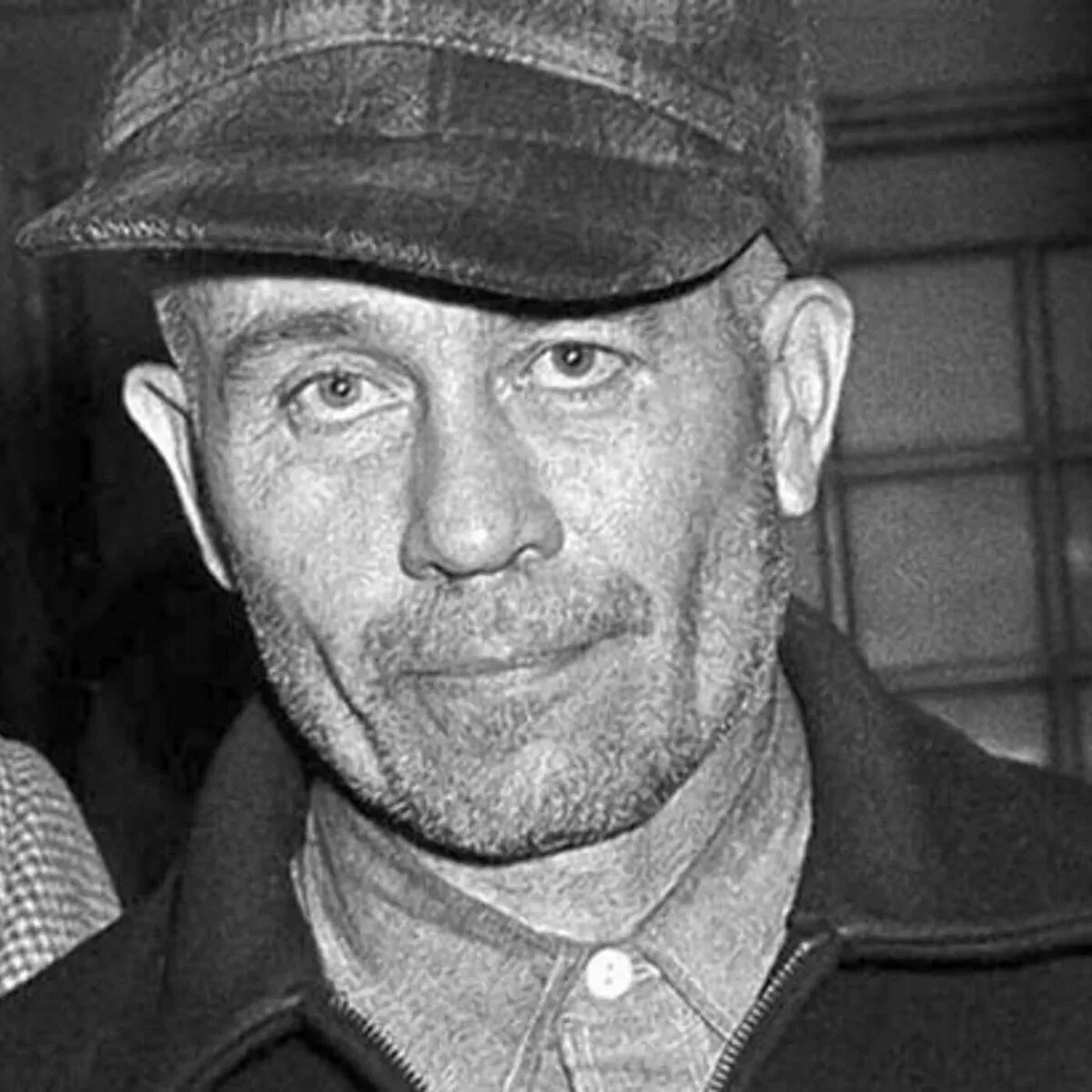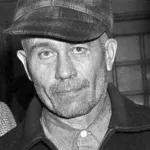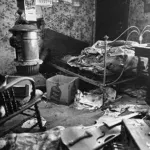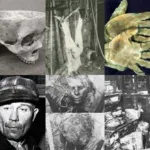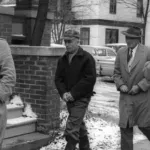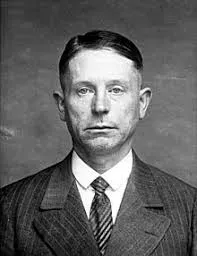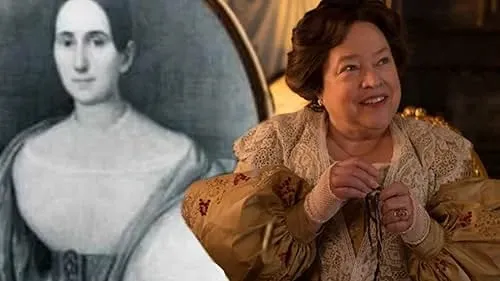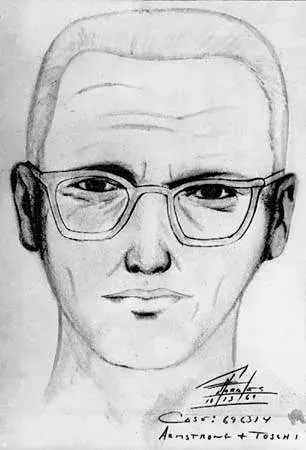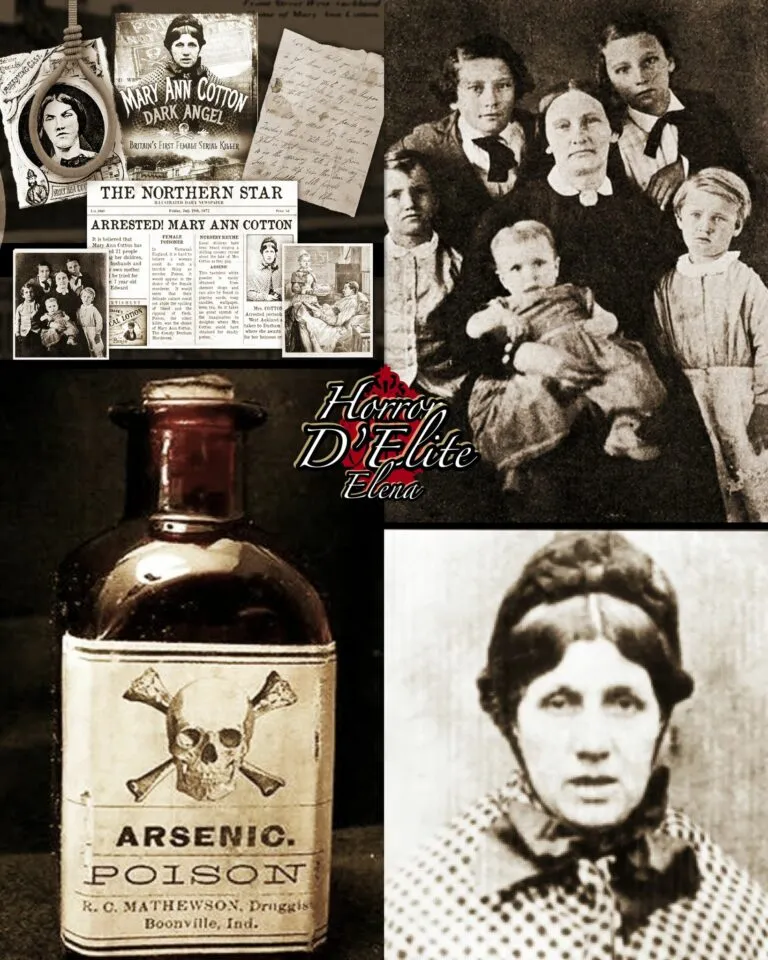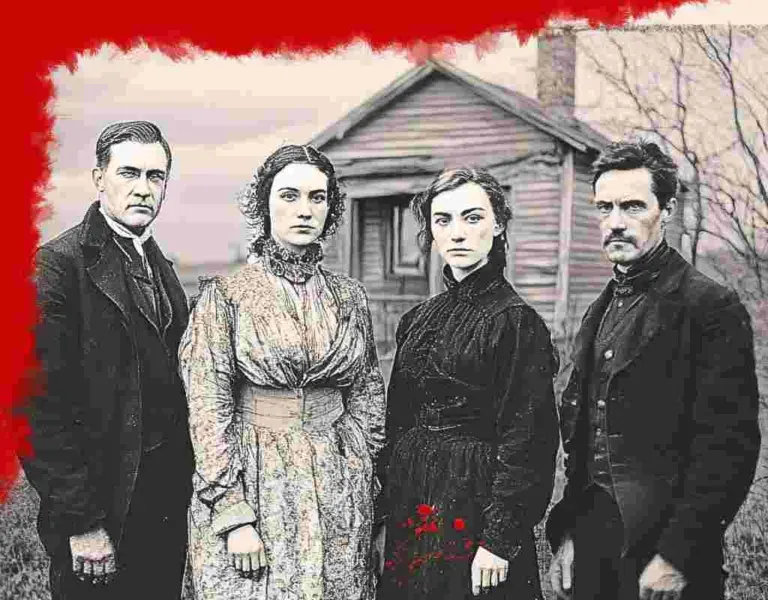Ed Gein
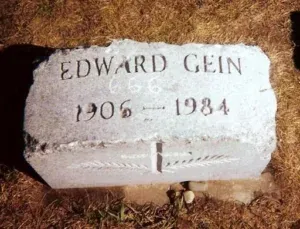 Edward Theodore “Ed” Gein was born in La Crosse on August 27, 1906, and died in Madison on July 26, 1984. He was an American serial killer.
Edward Theodore “Ed” Gein was born in La Crosse on August 27, 1906, and died in Madison on July 26, 1984. He was an American serial killer.
Edward Theodore Gein was born on August 27, 1906, in La Crosse, Wisconsin, the son of Augusta T. Lehrke and George P. Gein, and the younger brother of Henry G. Gein. His father, a violent alcoholic, after becoming the owner of a small grocery store for a few years, found himself unemployed, doing various jobs as a carpenter, tanner, and insurance agent, forcing the family to move to a 155-acre farm in the town of Plainfield, located in Waushara County. His mother, a Lutheran and religious fanatic, raised the children in a state of almost total isolation: their lives consisted of school and work on the farm, where she instilled in Ed and Henry the concept of the innate immorality of the world, hatred towards alcoholism, and the belief that all women (except her) were prostitutes and instruments of the devil; moreover, sex was only acceptable for procreation. Every afternoon, she read to her children from the Bible, particularly passages from the Old Testament that speak of death, murder, and divine punishment.
At the age of ten, Gein experienced an orgasm while watching his parents butcher a pig in a nearby shed. Upon reaching puberty, Augusta became increasingly intrusive and possessive: once, catching him while he was masturbating in the bathtub, she grabbed his genitals calling them “the curse of man” and immersed him in scalding water as punishment. At the age of 21, his mother made him and Henry promise that they would remain virgins (a promise broken by the brother, who was often linked to his mysterious death). With a slender build and a rather timid and effeminate demeanor, Gein became a victim of bullying by more aggressive peers, and he was also known for the continuous smirk he displayed during serious conversations; classmates and teachers also noticed his habit of laughing for no reason, almost as if he were mocking them. Despite his poor social skills, he did fairly well in school, particularly in reading.
On April 1, 1940, George P. Gein died at the age of 66 from heart failure, which led Ed and his brother to start doing odd jobs in town to help cover living expenses. From this time onward, brother Henry began to reject their mother Augusta’s perspective and tried to convince Edward as well. In May 1944, the brothers found themselves in the midst of a fire on the farm: Edward told the police he had lost sight of his brother but was then able to precisely indicate where the body was; although it was evident that Henry had suffered a head trauma (a fact that would lead to Ed being suspected and arrested), the local coroner concluded that he died of asphyxiation while trying to extinguish the fire. Gein lived alone with his beloved mother, but less than two years later, on December 29, 1945, Augusta died after suffering a stroke, leaving the grief-stricken son alone in the isolated farmhouse; the woman had already suffered a first attack, after which she remained paralyzed for several months, before suffering a second stroke that led to her death. Edward cried hysterically at her funeral.
The death of Augusta removed from his life what many criminal psychologists describe as “the only thread that still preserved his sanity.”
Shortly after his brother’s mysterious death in May 1944, six people went missing from the towns of La Crosse and Plainfield (Wisconsin) between 1947 and 1957. Gein was associated with only two of them, although he is suspected of further crimes. He committed acts of dismemberment and necrophilia on his victims; he was also known to violate graves and construct various pieces of furniture with body parts. The peculiarities of his life and crimes inspired films such as Psycho, Deranged, The Texas Chainsaw Massacre, The Silence of the Lambs, Ed Gein: The Butcher of Plainfield, and the character of “Bloody Face” in American Horror Story: Asylum.
The Victims
- Mary Hogan
- Mary Hogan was the owner of a bar in Pine Grove, Wisconsin. She disappeared in 1954, and later, during the search of Gein’s home, human remains were found, including a mask made from the skin of her face. Gein confessed to killing Hogan and taking her body to the farm.
- Bernice Worden
- Bernice Worden was the owner of a hardware store in Plainfield. Her disappearance in 1957 led authorities to investigate Gein. When the police searched his home, they found Worden’s decapitated body hanging upside down and disemboweled, treated in a manner similar to game. This horrific discovery confirmed suspicions about Gein’s activities.
In addition to these murders, Gein confessed to exhuming several corpses from local cemeteries, which he used to create macabre objects in his home, such as masks, clothing, and furniture made from human skin. Despite his confession to body snatching, no further murder charges were brought against him, and Gein was only found guilty of the murder of Bernice Worden.
Discovery and Arrest  On November 17, 1957, the police conducted a search of Gein’s home and were confronted with a gruesome scene. Human remains were found used as decorations and furniture: masks and clothing made from human skin, skulls used as bowls, lamps covered in skin, and a series of other objects revealing the macabre crimes committed by Gein.
On November 17, 1957, the police conducted a search of Gein’s home and were confronted with a gruesome scene. Human remains were found used as decorations and furniture: masks and clothing made from human skin, skulls used as bowls, lamps covered in skin, and a series of other objects revealing the macabre crimes committed by Gein.
Gein quickly confessed to killing Bernice Worden and also admitted to being responsible for the murder of another missing woman, Mary Hogan. He also admitted to exhuming bodies from local cemeteries to use them in his horrific “crafts.”
Trial and Detention Ed Gein was declared mentally incompetent to stand trial and was committed to a psychiatric hospital. It was not until 1968 that he was deemed competent to face justice and was tried for the murder of Bernice Worden. However, Gein was found guilty by reason of mental illness and was confined for the rest of his life in psychiatric facilities, where he died in 1984.

